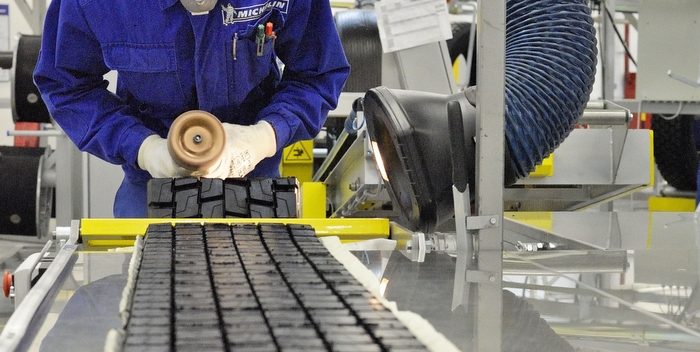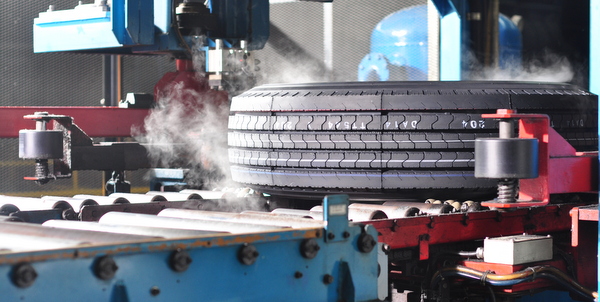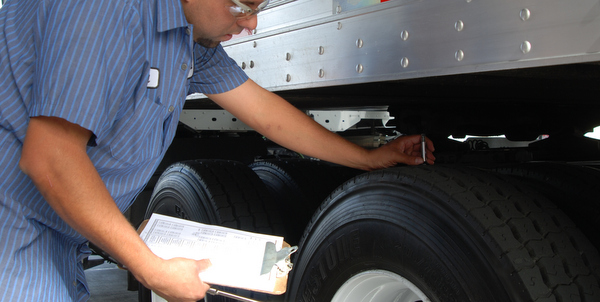Like most segments of the heavy-duty trucking industry, the fuel efficiency trend is rolling through tire retreads. While the conversation used to revolve around miles to removal, today’s talks are skewing toward fuel efficiency and total cost of ownership (TCO).
“For most fleets, fuel costs represent the single highest non-payroll operating expense. So fewer stops for fueling translate into lower overall fleet operating expenses,” said Paul Crehan, director of product marketing, Michelin Truck Tires. “The fleets benefit in retread technology by way of new compounds and tread designs incorporated into the new offerings. With quality tires capable of being retreaded several times, the total cost of the tire asset over the long run is a benefit for the fleet providing they care for the casing.”
One of the biggest driving forces in fuel efficiency retread technology is the SmartWay program that has pushed retreaders to create new tire solutions and develop new products to meet the new standards, particularly for fleets operating in or doing business in California. Fleets that travel into California, are now required to run new tire and retreads that are SmartWay compliant; so, some of this specific business has shifted to SmartWay-approved products. Of course, that spills into the rest of the country.
Many tire retreaders offer efficiency-focused retreading designs that are similar to new tires. SmartWay-verified retreads, for example, are subject to a rigorous testing method put forth by the Environmental Protection Agency (EPA), which includes testing using the ISO 28580 method, on an 8.25-in. test rim, a 2-meter drum (or a drum that follows the Drum Diameter correction protocol). The load used is 85% of the maximum load of the tire capacity and a capped inflation pressure corresponding to the maximum load capacity as marked on the sidewall for single load application. A minimum of three retreaded tire tests are required and the average test result for rolling resistance coefficient must be at or below the following targets:
“Thanks to advances in rubber technology and tread design, fuel efficient retreads are routinely offered to fleets as an economical and environmentally-sound alternative to new tires,” said Harvey Brodsky, managing director of the Retread Tire Association. “Retreaders can offer more tread designs than new tire dealers, as well as designs specific to the usage required by the trucking fleet.”
The challenge for manufacturers developing SmartWay tires is to combine fuel savings and maintain long mileage, as well as reducing the tire rolling resistance, said Giampaolo Brioschi, product marketing manager for Marangoni.
Taking a look at manufacturer offerings, Goodyear’s fuel-efficient retreads compliment its Fuel Max truck tires, which use fuel-saving compounds and specialized tread designs to lower tire rolling resistance, helping to reduce fuel consumption, explained Todd Labbe, general manager, commercial retreads, The Goodyear Tire & Rubber Co. The company’s UniCircle Technology offers fuel-saving benefits through its solid, seamless construction and UniCircle Tread Applicator’s laser positioning system. Goodyear offers the G392 SSD UniCircle and G394 SST UniCircle retread products—SmartWay-verified versions of which will be available soon.
With the launch of new tires, comes the launch of new retreads. Michelin has recently unveiled retreads for its latest tire offering including the Michelin X Line Energy D, Michelin X One Line Energy T and Michelin X One Line Energy D.
Continental’s ContiLifeCycle develops its ContiTread retreads based on new tire design and compounding to achieve comparable performance results from new tires to retreads. The Ecoplus line of ContiTread, includes several closed- and open-shoulder drive and trailer retreads. “Continental is constantly exploring innovation within all aspects of retreading,” said Scott Miller, ContiLifeCycle Manager. “Our equipment division colleagues at ContiMachinery are developing key pieces of retread equipment, our IT group has created CLC Soft to improve data gathering and tracking within the retread plant and our R&D engineers are always investigating various improvements to retread processing and products.”
Marangoni’s SmartWay-verified Energeco line offers a variety of tread depths for dual axle configuration, trailer design; dual axle configuration, closed shoulder drive design; dual axle configuration, open shoulder drive design; and wide-base axle configurations. The Energeco line sports its Ringtread technology (spliceless and double contour profile for a superior fitment on the tire) together with the Energeco compound in order to have no compromise between fuel saving and mileage.
Bandag Retreads are as fuel efficient, or in some cases better, than new tires, according to the maker, as long as a premium fuel-efficient original casing is used such as a Bridgestone M710 Ecopia or R197 Ecopia. The Bandag B710 FuelTech, B197 FuelTech, B135 FuelTech, and B835 FuelTech match the Bridgestone new tire counterpart. The recently launched the B799 is the retread complement to the Bridgestone M799.
By retreading these casings, fleets can extend the benefit that the original casing provides, explained Matt Schnedler, retread product marketing manager, Bridgestone Commercial Solutions.
“Tires that are retreaded by top quality retreaders will have a lower adjustment rate than comparable new tires and at a saving of as much as 50% of the cost of a new tire,” Brodsky commented.
Proper pull points
The establishment of a proper pull point for retreading will ensure that you are keeping your tires in service as long as you can without jeopardizing casing damage and retreadability. This will help generate lower cost per mile operation and tire program efficiency. So when is the proper time to pull a tire for retreading?
“According to the Tire Retread & Repair Information Bureau, the only hard and fast rule is mandated by the government—all fleets are required to pull steer tires when they reach 4/32nds remaining tread depth, while the limit for drive and trailer tires is 2/32nds,” said Patrick Gunn, director of sales and marketing, Commercial Tires, for Giti Tire (USA) Ltd. “While some fleets are concerned about retreading too late, we have noticed that some fleets are retreading too soon because their drivers are worried that the treads don’t appear as aggressive as they did when new, a particular concern with winter approaching. Rather than shipping the drive tires to a retreader with usable tread still on them, one great option is to move the partially worn drive tires to the trailer position. A thorough, ongoing tire evaluation program and consultation with your retreader will help you determine the sweet spot for pulling your tires for retreading.”

















